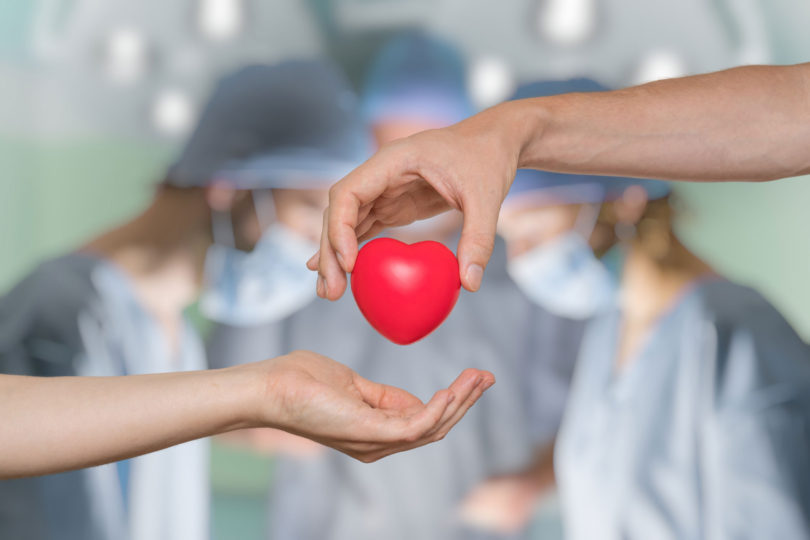Every April 29th, Wallace Green has a little celebration. It’s not his birthday, or anniversary, or the date of any real significant event in his life. But it is the birthday of the 8-year-old girl whose kidney he received four years ago. He had already had one failed transplant when he got a call two years later that another kidney was waiting for him at Norfolk General Hospital.
“It was overwhelming that I had that second opportunity,” says Green, who is from Virginia Beach, Va. “It was a bittersweet moment, because it was from an 8-year-old girl. It’s a feeling that’s hard to describe. You just finally have to say thank you.”
On May 16th, Green will be one of several panelists at a special program called “Organ Donation: The Gift of Life” at Zeiders American Dream Theater in Virginia Beach. The free event, part of the Spring into Healthy Living programming offered each year by Jewish Family Service of Tidewater (JFS), is intended to help demystify the organ donation process and inspire people to become donors themselves.
More than 115,000 people in the United States are waiting for life-saving organ transplants, with 22 dying each day while waiting, according to Donate Life Virginia. In Virginia alone, there are nearly 2,600 people waiting for organs, including about 2,000 just for kidneys.
We need people to understand how important this is,” says Patti Wainger.
The program’s keynote speaker will be Dr. Janet Wright, acting director of science and policy for the U.S. Surgeon General’s office. Besides Green, the panel includes Dr. David Baran, a transplant specialist at Sentara Heart Hospital in Norfolk; and Rabbi Jeffrey Arnowitz of Congregation Beth El in Norfolk. Completing the panel are two fathers whose family members were organ donors, including Thom Hutchins, whose son died at the age of 22.
Kyle Hutchins had suffered from asthma most of his life when complications from the disease took his life in 2017. His parents, Thom and Melissa of Chesapeake, decided to donate his organs. Although Kyle had never checked that box on his driver’s license application, he had talked about wanting to be a donor one day. Plus, it was in his nature.
“In his whole life, he gave,” Thom Hutchins says of his son, a graduate of Norfolk Academy who spent several years at Virginia Tech. “He was a giving and compassionate kid. He was a giving and compassionate adult. This was part of his make-up.”
Kyle’s organs — both kidneys, liver and heart — went to four different people. It took a little time, but becoming an advocate for organ donation has been part of the healing process.
It’s time for me to continue to share the message,” Hutchins says.
For Green, being the recipient of a kidney transplant gave him his life back. The retired Navy man, a Vietnam vet, had spent years buffing up his body with sports, exercise and a high-protein diet. When he was in his 50s, he learned his kidneys were failing due to proteinuria, a condition characterized by too much protein in the urine.
Green ended up on dialysis, changed his diet and spent eight years on the transplant list. His body rejected the first transplanted kidney, but the second, which he received in 2015, seems to be doing fine. “I’m feeling very well,” says Green, who now runs the kidney disease prevention group Health & Awareness (healthawarenesskidneydance.com). “And that’s why I stay on the go. That’s my promise to the donors, to educate others.”
Only about 60 percent of Virginians are registered donors, although almost anyone age 13 and up can become a donor, either by signing up at the DMV or online. The organs from one person can save up to eight lives, while a single tissue donor can enhance the lives of more than 75 people. Eyes can go to help others, as can blood vessels.
There are also living donors, in which living people can donate an organ or part of an organ — kidneys and livers — to a person in need of a transplant. In Green’s case, although several friends offered to donate a kidney, none of them ended up eligible.
JFS’s hope is that “Organ Donation: The Gift of Life” will offer up information as well as support to those waiting for transplants and their family members. And hopefully, lives will be saved.
“It’s a joy to perpetuate life,” Wainger says. “People are going to get so much out of this.”







